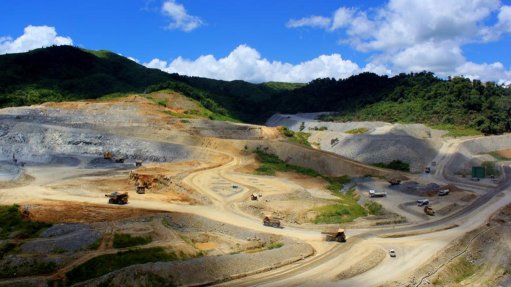
PERTH (miningweekly.com) – An optimisation study into gold miner OceanaGold’s Didipio project, in the Philippines, has shortened the timeline to underground production.
ASX- and TSX-listed OceanaGold on Friday reported that the optimisation study, which would be finalised in the fourth quarter of this year, has suggested that underground development should be brought forward by one year to start in 2015.
It was also suggested that access to higher-grade ore should be brought forward by two years, with first underground production slated for the third quarter of 2017, and a full ramp up to a mining rate of 1.6-million tonnes a year to be reached by 2020.
Furthermore, the study has advised on a redesigned plan for the underground operation, consisting of two mining domains that would increase the mine productivity rate to 1.6-million tonnes a year, instead of the planned 1.2-million tonnes a year, over a longer underground mine life.
“With nearly 18 months of commercial operations, we have identified significant value from the Didipio mine that will be unlocked through increased metal production, improved operating cash flows, as well as a significant reduction in waste mined combined with earlier access to higher grade underground ore,” said OceanaGold MD and CEO Mick Wilkes.
The openpit Didipio operation has also been redesigned with a reduced Stage 6 pit shell, which would result in the elimination of some 70-million tonnes of waste over the life of the project.
Wilkes told shareholders on Friday that starting underground operations at Didipio earlier than originally planned not only enabled the company faster access to the high-grade ore residing in the underground reserves, but also allowed OceanaGold to carry out further exploration at depth, where the company believed that high-grade mineralisation continued below the extent of the current drilling.
Over the coming months, the company would invest in additional resource definition and drilling for resource conversion to further prove out the orebody
The OceanaGold board has endorsed the study, including the earlier start of underground mine development and resource definition drilling, and would now work to secure the required approvals to start the development of surface facilities in the first quarter of 2015.
Wilkes noted that under the optimised underground design, the pre-production capital cost would be around A$110-million over a three-year period, while sustaining capital expenditure over the project’s mine life would average between A$7-million and A$8-million a year.